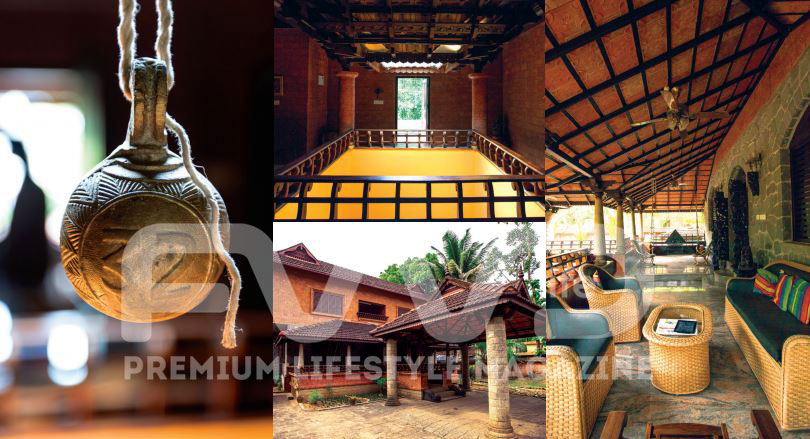Architecture
Karuna Moorthy’s Art Abode
A peep into the home of Thavil maestro Karuna Moorthy, in the historical town of Vaikom.
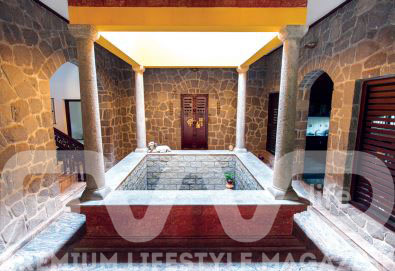
A peep into the home of Thavil maestro Karuna Moorthy, in the historical town of Vaikom.
Karuna Moorthy’s love for the Thavil began at the age of 10. His mother’s uncles were famous Nadaswaram players, and little Karuna had inherited music in his blood. Since then Karuna Moorthy has been travelling the world playing with saxophone players, flamenco dancers, drummers, guitarists and the like, bringing a new voice to the traditional temple instrument.
The maestro wanted a place where he could unwind from his busy schedule and slip into his world of thoughts. Vaikom was the ideal location apart from the fact that the Kshetrapeedom Kala was there. The natural beauty of the place and the delicious food from the region were reason enough to consolidate his decision. Now guests tell him that it is Vaikom, not Switzerland that is a paradise. He was returning from
Thiruvananthapuram after a show when he saw a man sculpting granite. He stopped the car and approached the sculptor. The man was astonished when Karuna Moorthy asked him if he could build a house. The sculptor agreed and joined Moorthy on his journey home.
In thought
Karuna Moorthy was particular that his house met his needs and was made with the best materials. The musician consulted with a Vasthushilpi before embarking on the design. He sat on a stone bench in the corner of the plot and started weaving his dream with help from friends. Through scribbles and basic drawings he communicated with his workmen. ‘Krishnashilakallu’ which is used for temple construction was brought in from the quarries of Koratty. Stone pillars and wooden sculptures were brought in from Karaikudi. Laterite stone was brought in from Ramanattukara. The team was given a free hand and it is evident in the finish.
House name: Karuna
Area: 3250 sqft
Materials: granite, laterite, teak, jungle jack
Translation
A traditional ‘padippura’ forms the entrance. A ‘thulasi thara’ graces the entry which moves from the porch and steps into the wide verandah. With the traditional charupady, this area enjoys the morning sun, evening shade and a cool breeze. One can hear the birds throughout the day as the locality is very quiet. The crafted wooden main door is flanked by wooden sculptures.
The windows of the house are inspired by the louvers of traditional Kerala temples and topped by graceful stone arches. The family says that they spend a lot of time in the verandah where they have hung a traditional wooden swing.
On entering the house, one’s eyes naturally move to the pool of light in the centre. The central courtyard brings light and air to the rest of the house. It is unmistakably the place where everyone gathers for a chat. Your line of sight ends at the somber pooja room. The ground floor has two bedrooms, kitchen and dining room. The dining space, which is where the kids end up studying according to Latha (Karuna Moorthy’s wife) is separated from the central area by the same wooden louvers. Upstairs is two more bedrooms, a balcony, terrace and a studio. The studio is where many artists have come to play with the maestro.
Last Word
The house has a quiet and somber aura. The interiors are kept minimal with a few paintings hung on the walls. The woodwork on the columns and ceiling is exquisite. Latha mentions that the maintenance is done at least three times a month. The family is very happy in this home of granite and laterite. Karuna Moorthy does express concern about the concrete houses that we build these days. He dreams of a street where the walls are full of color and showcase the culture of the place. The ambience of the street should not be lost within tall, plain walls. His belief of sticking to your roots and then venturing forward is also reflected in the architecture of his home.
Architecture
5 Sustainable Interior Design Trends to Embrace in 2024
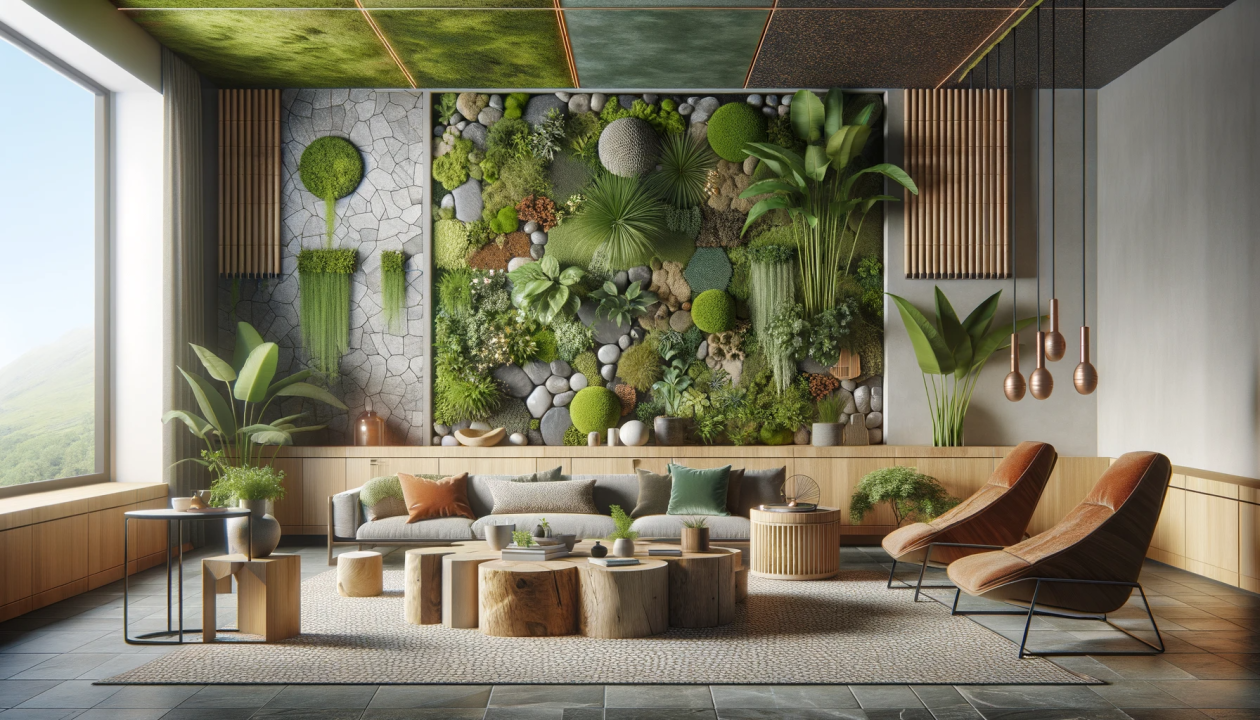
As the world becomes increasingly aware of the importance of sustainability, it’s no surprise that eco-friendly practices are making their way into the realm of interior design. In 2024, we can expect to see a surge in sustainable interior design trends that not only enhance the beauty of our living spaces but also minimise our environmental footprint. From repurposed materials to energy-efficient solutions, here are five sustainable interior design trends to embrace this year.
Upcycled Furniture:
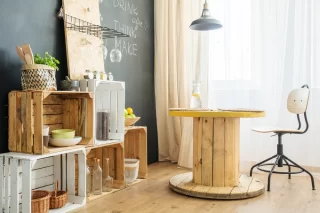
One of the most prominent sustainable interior design trends of 2024 is the use of upcycled furniture. Instead of buying new pieces, consider giving old furniture a new lease on life by refurbishing or repurposing them. From reclaimed wood tables to refurbished chairs, upcycled furniture adds character and charm to your space while reducing waste and conserving resources.
Biophilic Design:
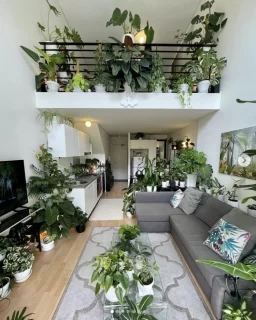
Biophilic design, which emphasizes a connection to nature, continues to gain popularity in 2024. Integrating natural elements such as plants, natural light, and organic materials into your interior design not only enhances aesthetics but also promotes well-being and sustainability. Consider incorporating living walls, indoor gardens, and sustainable wood finishes to bring the outdoors inside and create a healthier living environment.
Energy-Efficient Lighting:
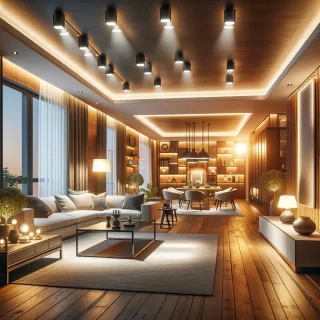
With a growing focus on energy conservation, energy-efficient lighting solutions are becoming a staple in sustainable interior design. LED lights, in particular, consume significantly less energy than traditional incandescent bulbs and last much longer, reducing both energy consumption and maintenance costs. Additionally, consider incorporating natural light sources such as skylights and large windows to maximize daylight and minimize the need for artificial lighting during the day.
Sustainable Textiles:
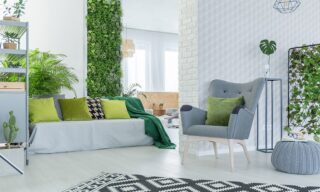
When it comes to upholstery and soft furnishings, opting for sustainable textiles is key to reducing environmental impact. Look for fabrics made from organic or recycled materials, such as organic cotton, hemp, bamboo, or recycled polyester. These materials not only reduce the use of harmful chemicals and pesticides but also minimize waste and support eco-friendly production practices. Additionally, consider investing in durable, high-quality textiles that stand the test of time, reducing the need for frequent replacements.
Smart Home Technology:

In 2024, smart home technology continues to evolve, offering innovative solutions for sustainable living. From smart thermostats that optimize energy usage to home automation systems that control lighting and appliances, these technologies can help reduce energy consumption and increase efficiency in your home. Additionally, smart home devices such as occupancy sensors and smart meters provide valuable insights into your energy usage, empowering you to make informed decisions about resource management and conservation.
As we strive to create more sustainable living environments, embracing these five interior design trends can help reduce our environmental impact while creating beautiful and functional spaces. Whether you’re upcycling old furniture, incorporating natural elements, or investing in energy-efficient technologies, every sustainable choice contributes to a greener future for generations to come. So let’s embrace these trends and make sustainability a cornerstone of our interior design practices in 2024 and beyond.
Architecture
Designing a Functional Home Office: Tips for Productivity and Comfort
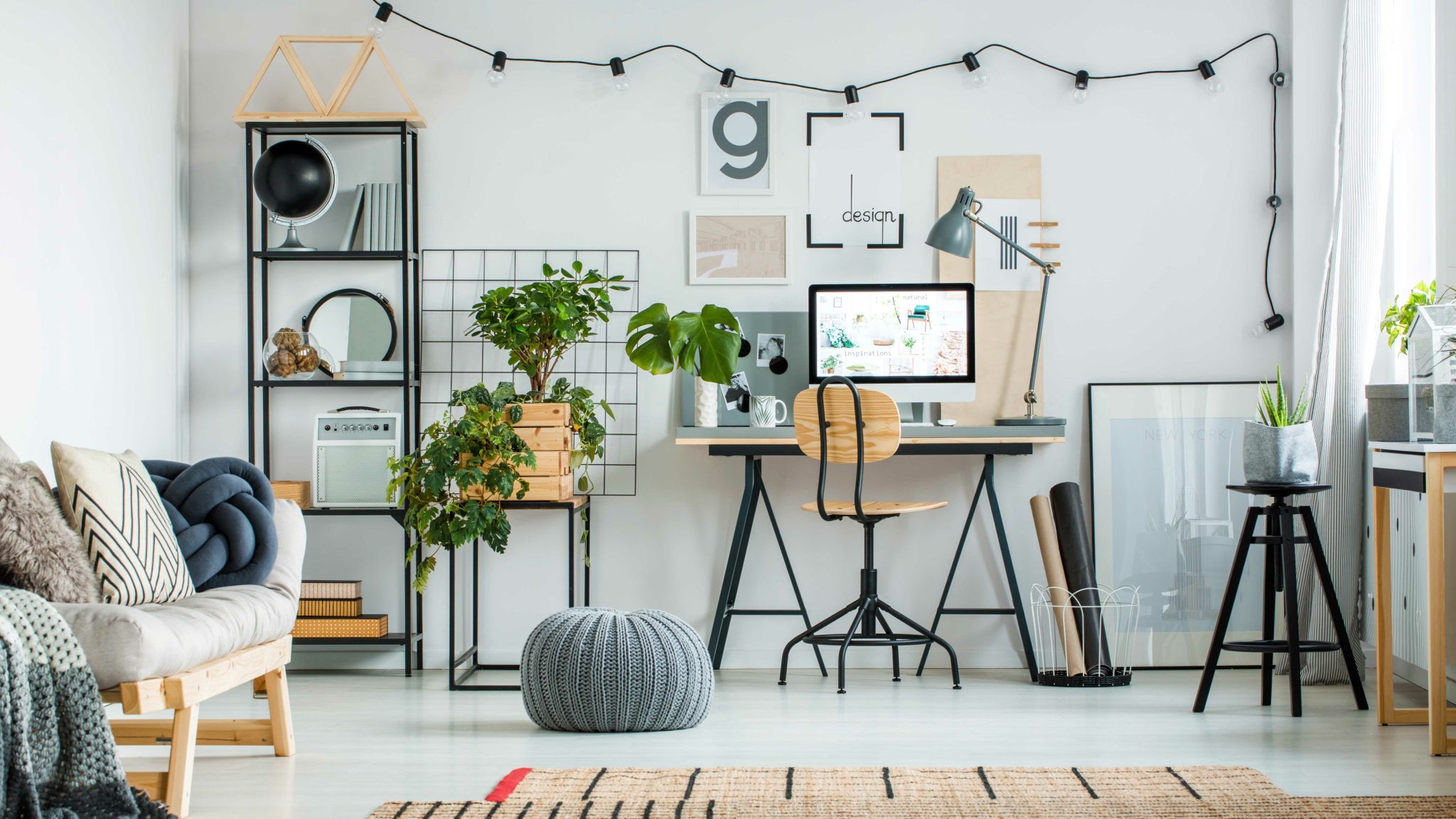
In today’s ever-evolving work landscape, the home office has become an essential sanctuary for productivity and creativity. Whether you’re a remote worker, freelancer, or entrepreneur, designing a functional home office is paramount for maintaining focus, maximizing efficiency, and enhancing overall well-being. Here are some expert tips to help you create a workspace that promotes productivity and comfort:
Choose the Right Location
Select a quiet and well-lit area in your home that is conducive to work. Ideally, this space should be away from distractions like heavy foot traffic or noise from common areas.
Invest in Ergonomic Furniture
Your office chair and desk are vital components of your workspace. Invest in ergonomic furniture that promotes good posture and reduces the risk of discomfort or injury during long hours of work.
Prioritize Natural Light
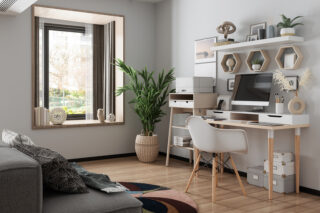
Position your desk near a window to take advantage of natural light. Natural light not only enhances mood and energy levels but also reduces eye strain and fatigue.
Declutter Regularly
Keep your workspace clutter-free by organizing cables, files, and supplies. A clean and organized environment fosters clarity of mind and helps minimize distractions.
Personalize Your Space
Incorporate elements that inspire and motivate you, such as artwork, plants, or motivational quotes. Personalizing your space can boost creativity and make your home office feel more inviting.
Optimize Technology Setup
Ensure that your technology setup including your computer, monitor, keyboard, and mouse is optimized for efficiency and comfort. Consider investing in accessories like an adjustable monitor stand or a wireless keyboard and mouse for added flexibility.
Incorporate Greenery
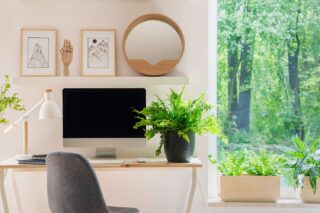
Introduce plants into your home office to improve air quality and add a touch of nature to your space. Plants not only enhance aesthetics but also have been shown to reduce stress and increase productivity.
Create a Distraction-Free Zone
Minimize distractions by setting boundaries with family members or roommates and establishing specific work hours. Consider using noise-canceling headphones or a white noise machine to block out unwanted sounds.
By implementing these tips, you can design a home office that promotes productivity, creativity, and overall well-being. Remember that every individual’s needs and preferences are unique, so feel free to experiment and adjust your workspace to suit your specific requirements. With a well-designed home office, you’ll be better equipped to tackle your tasks with focus, efficiency, and comfort.
Architecture
A Guide to Choosing the Perfect Colors for Your Home Interior

Your home is your sanctuary, and choosing the right colors for its interior can significantly impact the atmosphere and ambiance of each room. Whether you’re looking to create a cozy retreat, a vibrant living space, or a serene oasis, selecting the perfect color palette is key. In this guide, we’ll walk you through the process of choosing the right colors for your home interior to reflect your personal style and create a harmonious living environment.
Consider the Mood You Want to Create:
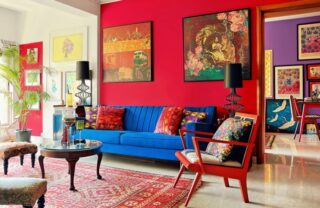
The first step in choosing the right colors for your home interior is to consider the mood or atmosphere you want to evoke in each room. Do you prefer a calming and serene space, or are you looking for something more vibrant and energizing? Think about how you want to feel when you’re in each room and choose colors that align with those emotions.
Take Lighting into Account:
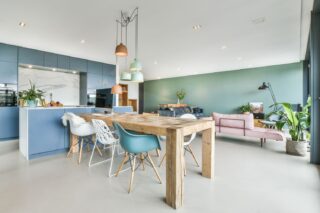
Lighting plays a crucial role in how colors appear in a room. Natural light can enhance certain hues while making others appear dull. Consider the direction and intensity of natural light in each room when choosing paint colors. Rooms with ample natural light can handle bold and vibrant colors, while those with less light may benefit from softer, lighter shades.
Create a Cohesive Color Scheme:

To ensure a cohesive flow throughout your home, choose a consistent color scheme that ties all the rooms together. You can achieve this by selecting a few key colors and using them in different combinations throughout the house. Neutral colors like whites, grays, and beiges make excellent base tones, while accent colors can add pops of personality and interest.
Explore Color Psychology:
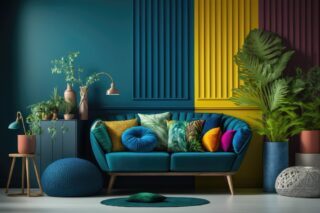
Color psychology can help you understand how different colors can affect mood and behavior. For example, blue is often associated with calmness and tranquility, making it an excellent choice for bedrooms and bathrooms. Yellow, on the other hand, can evoke feelings of happiness and energy, making it ideal for kitchens and living areas. Consider the psychological effects of each color when making your choices.
Test Paint Samples:

Before committing to a color for your walls, it’s essential to test paint samples in the actual space. Paint a small section of the wall with your chosen colors and observe how they look throughout the day in different lighting conditions. This will help you make an informed decision and ensure that you’re happy with the final result.
Don’t Forget About Accents and Accessories:
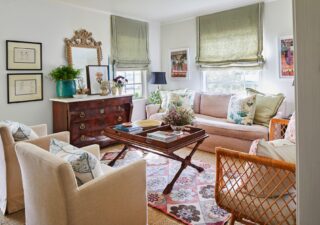
In addition to wall colors, consider how accent pieces and accessories can complement your chosen color scheme. Throw pillows, rugs, curtains, artwork, and furniture upholstery can all add depth and dimension to your space while tying the room together visually.
Choosing the right colors for your home interior is a personal and creative process that can transform your living space into a place you love to call home. By considering the mood you want to create, taking lighting into account, creating a cohesive color scheme, exploring color psychology, testing paint samples, and incorporating accents and accessories, you can design a home that reflects your unique style and personality. So, let your creativity flow, and enjoy the process of bringing your vision to life!
-

 Entertainment3 months ago
Entertainment3 months agoThe Stunning looks from Bhagya Suresh’s Wedding
-

 Fashion3 months ago
Fashion3 months agoMost Discussed Ajrakh Saree of Alia Bhatt
-

 Entertainment3 months ago
Entertainment3 months agoThe Most Stylish Guests of Bhagya Suresh Reception
-

 Entertainment3 months ago
Entertainment3 months agoEverything about the Ira Khan wedding that is out of the norm
-

 Entertainment3 months ago
Entertainment3 months agoBridal Bliss : All Bridal Looks of Swasika Vijay
-

 Entertainment3 months ago
Entertainment3 months agoAll About The Dreamy Pre Wedding Invite Of Anant Ambani & Radhika Merchant
-

 Fashion3 months ago
Fashion3 months agoMajor Denim Trends You Need To Know in 2024
-

 Entertainment3 months ago
Entertainment3 months agoBest Looks from Golden Globes 2024

